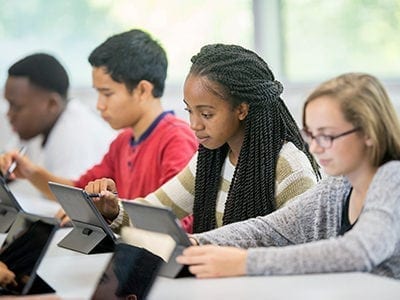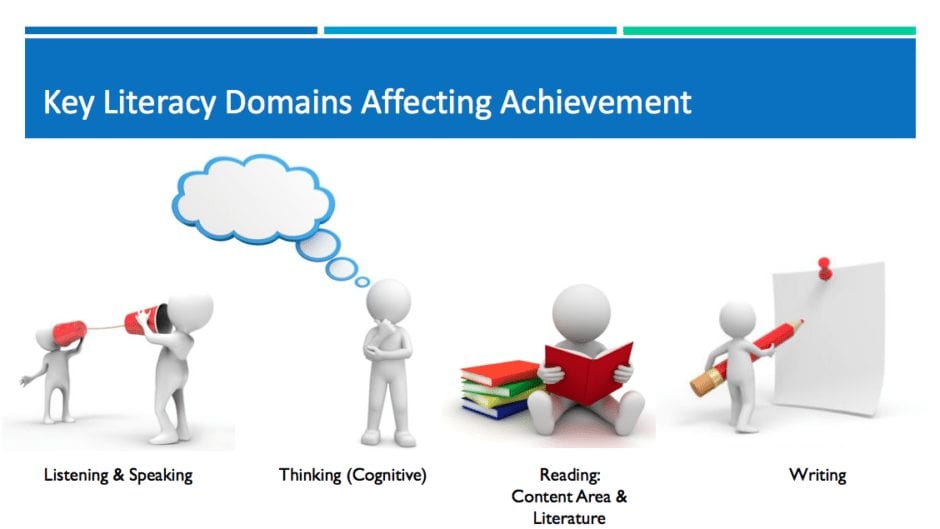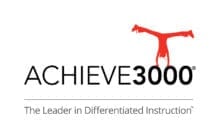Understanding the Impact of Culture on Equity in Education
When educators think about diversity in the classroom, culture may be one of the characteristics that crosses their mind. But as they select their curriculum and develop their lessons, most teachers are not accounting for how culture will impact a student’s ability to participate and learn, says Dr. Almitra Berry-Jones, nationally recognized speaker, author, and consultant on the topic of culturally and linguistically diverse learners at-risk. In her edWebinar, “Cultural Relevance and Academic Equity in the Age of ESSA,” Dr. Berry-Jones explained how understanding the impact of culture, adopting a student-first mindset, and creating multiple points of engagement with the same content will help teachers move towards academic equity in their classroom.
First, Dr. Berry-Jones discussed culture—the values and beliefs students bring to the classroom. Culture is a social construct, not genetic, and most students have at least three: home, peer, and school. The language and behaviors for each one is different, and for many students, the language at home is so divergent that entering school is like going to a foreign country and speaking a new language. For example, students may come from a home where children are told to be seen and not heard, so speaking up and participating in class seems wrong to them. Or, what some teachers see as a behavior disorder is just the contrast between the culture at home and at school.
Also, while educators need to provide intervention for ELL students, they need to think about students who may only speak English but don’t “speak the language of school.” There is a connection between the poverty level a student grows up in, the educational achievement of the students’ parents, and language. Poverty often creates a developmental burden that manifests itself in a word gap and populations of kids who are not ready to learn. More important, there is also a feedback gap where most of the kids’ interactions with adults have been negative. The students arrive in kindergarten not understanding the role of the teacher and how to develop a positive relationship with him or her.
Minding the achievement gap, though, is about more than just providing equality in education (the same texts, teacher, and curriculum). Schools should be striving for equity, where every learner is getting what he or she needs to be successful. Providing equity initially means understanding the areas of instruction that influence the achievement gap and how to tailor lessons to different learning and cultural needs. Regarding literacy, Dr. Berry-Jones identified four key areas that can impact achievement and are affected by culture: listening and speaking, thinking, reading, and writing. For example, when approaching how students think, teachers need to consider students’ life experiences before the classroom, their world view, and how their thoughts have been shaped by their community before they enter the school doors.
In addition, as part of the focus on equality in the classroom, Dr. Berry-Jones advocates for teachers to develop a culturally self-sustaining pedagogy. Culturally sustaining pedagogy requires deliberate instruction and practice. First, teachers must have a growth mindset. They need coaching and constructive feedback to understand how they can improve their skills, and they also need to be open to learning new ideas and techniques. More important, educators must offer consistency and persevere with even the most difficult students. The problem is not that students don’t want to learn, she explained, but there are other cultural influences interfering with their ability to learn. Teachers must provide opportunities for students to share their worldview and take charge of their education.
“We can push our learners so much further, not by putting more and more information in front of them, but by…believing that they can do what we’re asking them to do and stretching them and giving them opportunities through discussion…And letting them talk peer-to-peer about what they’re seeing, what they’re learning, what they’re reading. And furthering that conversation because that’s what keeps students interested and engaged in instruction,” said Dr. Berry-Jones. “It’s not our song and dance routine.”
This broadcast was hosted by edWeb.net and Achieve3000.
This article was modified and published by eSchool News.
About the Presenter
Almitra Berry-Jones, Ed.D. is a nationally recognized speaker, author, and consultant on the topic of culturally and linguistically diverse learners at-risk. Her research focuses on academic achievement in majority-minority, high-poverty, large, urban school districts. Dr. Berry-Jones is author of the book Effecting Change: Intervention for Culturally and Linguistically Diverse Learners. Dr. Berry-Jones holds a M.Ed. in curriculum and instruction, and an Ed.D. in educational leadership with a specialization in curriculum and instruction. She holds multiple credentials including a California reading endorsement, language development specialist (LDS), and bilingual/cross-cultural language acquisition and development (CLAD/BCLAD) for Spanish language instruction. Dr. Berry-Jones has taught, trained, and supervised reading/language arts implementations (regular, intervention, bilingual/dual immersion, and special education) throughout the United States with an emphasis on direct instruction. She has presented at scores of state, national, and international conferences on the topics of leadership, curriculum reform, and meeting the needs of students at-risk.
Join the Community
Differentiating Instruction with Educational Technology is a free professional learning community that provides educators, curriculum leaders, and industry members with a place to collaborate on best practices for using educational technology to differentiate instruction.
Achieve3000 reaches all students, PreK-12+, at their individual reading levels to accelerate their learning, improve high-stakes test performance, and prepare them for college and career success.






Comments are closed.